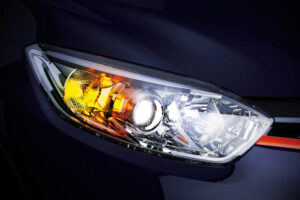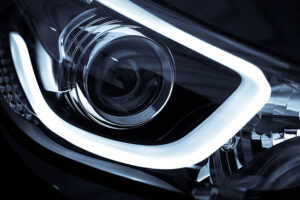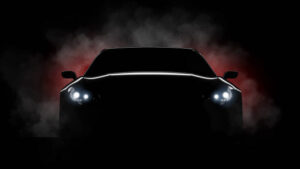Introduction: the Importance of Paying Attention to Your H1 Headlight Bulb
Have been driving at night and wished to know why that one road seems much darker than most? Look twice before throwing it out in the back of the laundry as a dusty window, or an interplanetary joker, before you decide it is a h1 headlight bulb. Headlights are a daily routine that we tend to ignore, until the dreadful time when they start giving more shadow than light. The unreliable, dreary headlight does not only mean that you need to have a frustrating driving experience; it endangers you and others as well. Hence, it is of interest to most people to recognize the initial signs of a failing bulb, which, due to unpredictable weather, can accelerate as an unwelcomed guest at the door.

So, now, what we want to do is let us explore specifically what it is we need to be mindful of and why things like rain, snow and even heat can relegate that humble H1 bulb into yesterday, more rapidly than you can blink an eye.
So What is an H1 Headlight Bulb?
To the novice, H1 head lights are uni filament bulbs that are normally fitted in either high or low beam car headlights. They provide a stark contrast, strong brightness and are referred to as versatile. H1 bulbs are used in many European cars as well as in a lot of motorcycles. The ones that can be thought of as a Japanese dream machine of headlights are the reliable workhorse of headlights.
Symptoms It may be Time to change Your H1 Headlight Bulb
- The issue of dim or flickering Light
The give-away. You see one beam is failing to do its fair share any more. Is it winking as an undecided candle or punching less in the dark? This does not only increase difficulty to navigate at night but is usually an indication that the filament is about to give up.
- One Bulb Has Gone-Yet the Other is Good
Such a classic mono-eyed car appearance is not an emerging and new fashion. It is your car that tells you, Hey, I want some care! Suppose you have your H1 out and other lights are operating perfectly, it is highly probable that anything is wrong with the bulb and not with a wiring gremlin.
- Tan or haze
A healthy H1 bulb must go clear and white. When the output appears to be yellow, dull, or presents cloudy glass then the cause of the problem may either be age or exposure to the environment. The glass may degrade after some time causing a decrease in light and more possibility of spontaneous breaking.
- Physical Physical Evidence
There are times that the signs do not appear subtle. Have you got a burnt line or a broken filament in the bulb? That is the signal to do something. Being patient may end up leaving you in a fix, when you least desired to be.
- Long Wear or Mileage
Replacing them even when everything is okay with them should be one of your considerations even when having spent more than 500 hours using your current bulbs or by perhaps having spent 30,000 miles with the current bulbs attached to your car. Bulbs wear out slowly even though they seem to be functioning.
The Weather and its Influence on H1 Bulb Output and Life Time

Rain and Moisture- Secret Enemies
And heavy rain is harsh not only on wipers. Even small amounts of moisture getting into the headlights assembly may result in clouded lenses, or in the worst case, condensation within the bulb housing. Small quantities of water vapor may cause stress to the bulb possibly resulting in early life or an instant death. One might as well endeavor to jog in wet socks but it is sure to break sometime.
H1 Bulbs Do Not Get Along with the Heatwaves
Hot weather is no more lenient. Summer road travel or residence in more hot climates implies that bulbs are used at elevated levels of ambient heat. Whenever you turn on such an H1 bulb, it undergoes additional thermal stress. The result? Speeded up age of glass as well as filament. They go out with greater ease and will crack or blacken the glass envelope.
Cold winter and abrupt changes
Your headlights do not have the same privilege as you to keep in bed on extreme cold weather. During a cold snap the bulb material shrinks. Turning on your lights when you have spent the previous night in freezing temperatures gives you a sudden temperature rise. This has been taken as an added burden in this quick heating up. And the freeze-thaw thing takes its toll on the integrity of the bulb over time.
Road Chemicals, Dust, and Salt
In certain areas, the roads are covered with de-icing salt, gritty dust and treated with chemicals and remain so throughout months. These may enter ill-sealed headlight housings and will either corrode metal contacts or cut micro-abrasions into the bulb surface. It is the car version of sand paper eating through your best pair of jeans.
Is it possible to make your H1 Bulb Last Longer?

Absolutely! There are easy routines and some preventive measures that help prolong the bulb life:
It is advisable to have gloves on or use a clean tissue whenever you fix up a new bulb. The oils that can cause hot spots on the glass when they come into contact with your skin, this leads to failure.
Clean lenses of headlights. Covered bulbs can not work efficiently because dirty covers make them labor more and reduce the lifespan.
Repair the headlight assembly immediately in case it has cracks or leaks. A condensation can be welcomed even by a hairline crack.
Avoid turning on your high beams to shine or signal a joke on the dark road. The energy wastage cycling on and off creates an unwarranted burden on the filament.